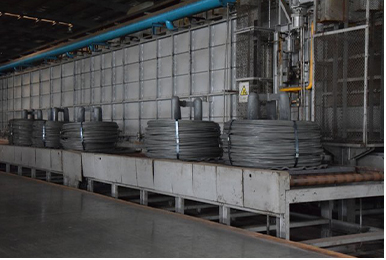Aug . 16, 2024 13:25 Back to list
An Overview of Fundamental Steel Production Techniques in China
The Evolution of Basic Steel Making in China
China has emerged as a global powerhouse in the steelmaking industry, with basic steel making forming the backbone of its industrial development. Over the last few decades, the country has transformed from a minor player into the world's largest producer of steel, driven by robust economic growth, urbanization, and infrastructure development. This article delves into the key aspects of basic steel making in China, highlighting its historical context, technological advancements, and future challenges.
The Evolution of Basic Steel Making in China
The process of basic steel making in China primarily relies on the blast furnace method, which involves smelting iron ore alongside coke and fluxes to produce molten iron. This molten iron is then converted into steel through several methods, including basic oxygen steelmaking (BOS), which has become the dominant technology in the country. The BOS process is favored for its efficiency and ability to produce high-quality steel suitable for various applications. As of recent years, China has invested significantly in both upgrading existing facilities and constructing new, technologically advanced steel plants to enhance productivity and reduce environmental impact.
china basic steel making

Moreover, the Chinese steel industry has witnessed the rapid adoption of innovative technologies. Automation, artificial intelligence, and big data analytics are increasingly being integrated into the production process. These advancements allow for improved quality control, energy efficiency, and waste reduction, aligning with the government's push towards sustainable development. Furthermore, the introduction of electric arc furnaces (EAFs) has diversified the production methods, accommodating the recycling of scrap steel, which is crucial for minimizing the ecological footprint of steel manufacturing.
Despite its success, China's steel industry faces numerous challenges. One of the most pressing issues is environmental sustainability. The steel sector is a significant contributor to carbon emissions, and the Chinese government has set ambitious targets to reduce carbon intensity by 2030. Consequently, steelmakers are under pressure to adopt greener technologies and processes, transitioning towards low-carbon steel production. Efforts include developing hydrogen-based steelmaking methods and improving energy efficiency across the manufacturing chain.
Additionally, the global steel market is undergoing changes that could impact China's position. Trade tensions, fluctuations in demand, and shifts in supply chains necessitate agility and adaptability from Chinese steel manufacturers. Competition from other countries, notably India and the EU, emphasizes the need for China to innovate continually and enhance the quality of its steel products.
In summary, basic steel making in China has a rich history marked by significant growth and modernization. As the industry evolves, it must address environmental concerns and adapt to the changing global landscape. The commitment to innovation and sustainable practices will be vital for China's steel industry to maintain its status as a world leader while contributing positively to the global challenges of climate change and resource conservation. The future of steel making in China hinges on balancing economic growth with environmental responsibility, ensuring that it can forge ahead in a sustainable manner.
-
Eco-Friendly Granule Covering Agent | Dust & Caking Control
NewsAug.06,2025
-
Fe-C Composite Pellets for BOF: High-Efficiency & Cost-Saving
NewsAug.05,2025
-
Premium Tundish Covering Agents Exporters | High Purity
NewsAug.04,2025
-
Fe-C Composite Pellets for BOF | Efficient & Economical
NewsAug.03,2025
-
Top Tundish Covering Agent Exporters | Premium Quality Solutions
NewsAug.02,2025
-
First Bauxite Exporters | AI-Optimized Supply
NewsAug.01,2025
